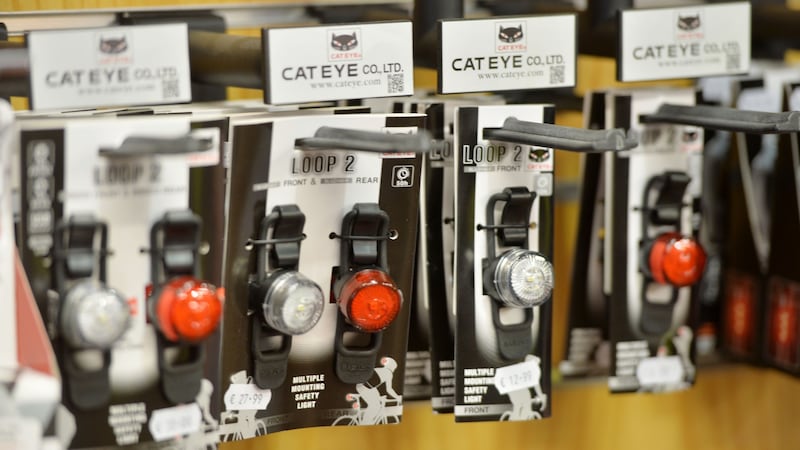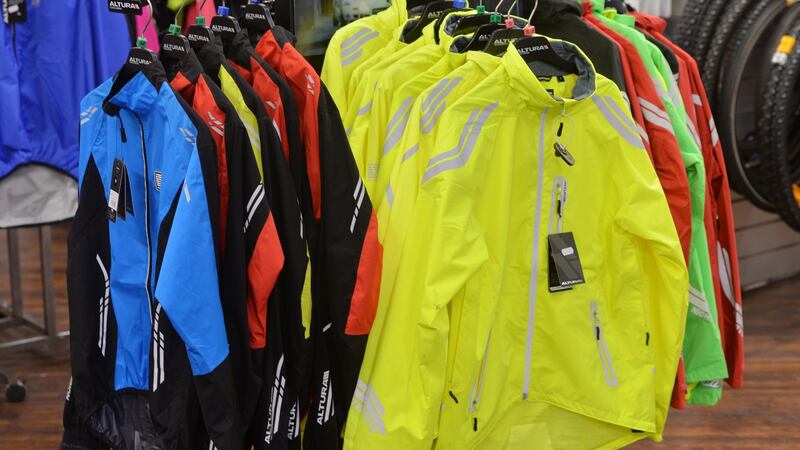When it comes to the cost of cycling, you can spend anything from less than € 100 to well in excess of € 1,000 on a bicycle. If you spend a lot, however, you will make the bike a magnet for thieves – there is no escaping the fact that theft is an issue when it comes to cycling – and you will want to take extra steps to secure it. Other accessories will cost significantly less and the purchases will be less vulnerable.
Helmet
The first accessory is a bicycle helmet. Wearing a helmet will significantly reduce the physical risks associated with cycling. By any measure, they are important and by any measure they represent great value for money. Argos has a range of bicycle helmets which cost from about € 10 to € 35. Specialised cycling shops also sell a wide variety of helmets although prices can reach more than € 200. There is no need for an average commuter to go over the top and a helmet which has the CE safety mark will be good enough.


Lights
Lights have come along way in recent years thanks to the development of LED technology. Cateye loop lights, for example, are bright, neat and fit easily into a pocket or bag. They are fitted with powerful LEDs that are visible from many angles and are looped around the front or rear of a bicycle meaning that no brackets are required. They can by bought in any bike shop for about € 13. Mounted cateye lights are also popular. Typically, these lights have wider beams and will run for as long as 80 hours on constant mode and up to 320 hours on flashing mode.
Locks
When it comes to locks, you get what you pay for. There is no point in spending a tenner on a lock which a bike thief will be able to snip in less than a second. The trick about keeping your bike safe is not making it impossible to rob – that is almost impossible – but to make it harder to rob than the bike next to it. Look for brands such as Abus and Kryptonite. And be prepared to spend at least € 40 on a lock. Ideally, you will have two locks – a D lock and a coil lock. The thinking behind the dual-lock system is while a casual bike thief might have a bolt cutter – to snip coil locks – or hammer or angle grinder for a D lock, only the most serious bike thief will carry both.
Pump
You can buy a decent bicycle pump for € 10. A mini pump – which will do the same thing as a regular pump while taking up less space – costs in the region of € 14 while a stand-up pump will cost about € 25. It is dearer, for sure, but it will see you pump your tyres in half the time and if you are going to do a lot of cycling it would definitely be worth the investment.
Clothes
This is Ireland. It rains sometimes here although not as much as you might think. According to Met Éireann, a commuting cyclist in the drier eastern part of the country is only likely to be rained on during their cycle once every 30 or so trips.
People who live in the west are more vulnerable. But wherever you live, raingear is essential. A good quality rain jacket is important. An Endura Gridlock Waterproof Jacket costs € 65. It is breathable and made with a lot of fluorescent material for enhanced night time visibility. Then there is the trousers.
You can buy raingear for less than € 20 but it might be a false economy as cheap rain gear will not stand up to a long downpour.
Endura Gridlock Overtrousers are available in most good bike shops. They are easy to get on and off, have zipped pockets, reflective elements and are very waterproof and breathable. Be prepared to spend at least € 50 on a pair of trousers. There is probably no need to spend much more than that.









